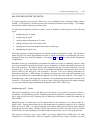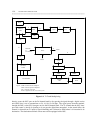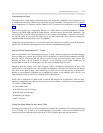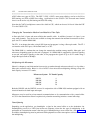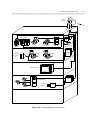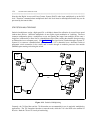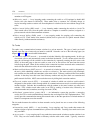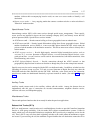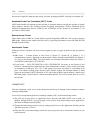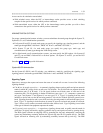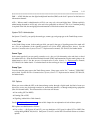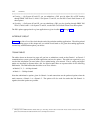TRUNKING 1-37
_ ______________________________________________________________________________________
_ ______________________________________________________________________________________
_ ______________________________________________________________________________________
numbers (without their accompanying location code) are sent over access trunks to identify a call
destination.
• Bypass access trunks — 1-way outgoing trunks that connect a tandem switch to a main switch that is
"homed on" another tandem.
Special-Access Trunks
Interexchange carriers (IXCs) offer some services through special-access arrangements. These special-
access services are installed to bypass the local exchange company (LEC) and directly access the IXC
point-of-presence (POP). Special-access services include:
• AT&T MEGACOM — Permits outward calling to diverse geographical areas at reduced rates.
• AT&T MEGACOM 800 — Permits inward 800-number calling from diverse geographical areas. Dialed
number identification service (DNIS) is a MEGACOM 800 option wherein the IXC switch sends the
private switch the number of the destination extension. This allows MEGACOM callers to directly dial a
station number.
• AT&T ACCUNET services — Provide high-capacity terrestrial digital transmission services, such as
ACCUNET T1.5, ACCUNET Spectrum of Digital Services, ACCUNET Switched Digital Services, voice-
grade private lines. ACCUNET services can be used for data transmission, bulk data transmission, video
teleconferencing, and so forth.
• AT&T Software-Defined Network — Provide connections through the AT&T network so that
geographically dispersed user locations can function as though they were on the same private network.
Special-access services can be arranged with the IXC over dedicated trunks. In addition, switched services
(including all services except ACCUNET T1.5 and ACCUNET Spectrum of Digital Services) may share the
ISDN-PRI trunk that links the PBX with the IXC POP. Note that, at the switch end of the connection,
special-access trunks are administered identically to private network tie trunks. (See tables 1-10 through
1-13.)
Auxiliary Trunks
Auxiliary trunks connect units in the auxiliary cabinet with the switch. Among the features that are
implemented with this type of connection are recorded announcements, telephone dictation service,
malicious call trace, and loudspeaker paging.
Miscellaneous Trunks
These trunks perform functions that do not neatly fit under the previous applications.
Release Link Trunks (RLTs)
RLTs are used between a main location and a satellite/tributary location to provide Centralized Attendant
Service or ACD group availability. Like tie trunks, RLTs connect communications systems. Unlike tie
trunks, which carry calls from their initiation to completion, RLTs provide only a temporary service for the
call. That is, RLTs carry calls from their originating switches to the switch where the attendants or agents
are located. Upon receiving the call, the attendant or agent identifies the call destination, returns the call to



